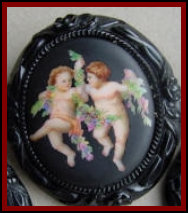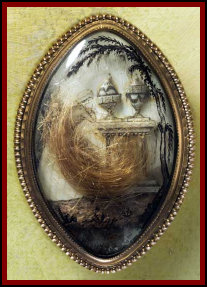











Thank you for your continued support and readership. Please insure to forward this Newsletter to your friends and neighbors. If you no longer wish to receive our emails regarding the update of this page, please send us an email to info@nova-antiques.com with the subject line "OPT OUT"
NOVA-Antiques.com does not run, manage or operate any of the flea markets, auction houses or estate sale companies advertised on this page. The NOVA-Antiques Newsletter is published for the exclusive use, enjoyment and convenience of our readers and subscribers. Any questions regarding the flea markets, auction houses and estate sale companies should be directed to the appropriate owner, promoter or manager.



To some, Jet Jewelry may bring to mind jewelry that includes airplanes, helicopters and dirigibles; to others, Jet Jewelry
brings to mind jewelry that is made of a black substance, and especially Mourning Jewelry. Sometimes people confuse Jet Jewelry
with jewelry made of other materials such as vulcanite (sometimes called ebonite) or bog oak. Jet, also known as gagate or black
amber and is actually fossilized coal that was used to make jewelry because it was easily carved and decorated. Jet has been
used to create jewelry for thousands of years and examples dating to 200 BC have been found.
Jet Jewelry came in many designs and styles, but some of the most beautiful pieces are intricately carved brooches and cameos designed
by top artisans and worn by the Victorians. This type of jewelry, which is highly prized and collectible today, featured rose
and flower bouquets; birds and cameo figures also adorned some of the most beautiful examples of these mementos. Other Jet Jewelry
can be found with hand painted floral, figures and cherubs in bright colors that offset the black polished backgrounds.
Some of the more desirable pieces of Jet Jewelry can be purchased by collectors for thousands of dollars but many other pieces of
the jewelry can be found at more reasonable prices. However, beware of the imitations. Several sources tell us that to
determine if a piece jewelry is made of Jet, use a red hot needle on an inconspicuous part of the jewelry. If it smells like
coal burning, you can safely assume it is Jet. Others say to lightly rub it against concrete. If it leaves a brownish mark it
is Jet. Jet is also warm to the touch.

Mourning Jewelry has been around in one form or another since the 1400’s but did not become mainstream and popular
until the Georgian and more so the Victorian periods. In England, Mourning Jewelry, although used in some eras as status symbols,
was really a way for people to remember loved ones who passed away. Mourning Jewelry didn’t really become popular in the United
States until the 1861 – 1865, the years of the American Civil War, where more than 600,000 soldiers died. This period also coincided
with the death of Prince Albert in 1861, after which Queen Victoria’s went into mourning and wore the jewelry as a remembrance of
her husband and was quickly imitated by the population.
Rings, lockets, earrings and cameos all served as souvenirs to remember loved ones who died; proudly worn, they showed that the person
was being remembered but it also reminded everyone with certainty that someday we too would pass. As such, mourning jewelry
was usually designed and adorned with all of the symbols of death, including skulls, urns, coffins, and sometimes serpents. Morning jewelry was usually made of gold and or sterling silver and more collectible pieces are made of Jet, which is sometimes called
black amber but which is really fossilized coal. A lot of the jewelry in the 1800’s could also include a lock of the deceased’s
hair, as such, this type of mourning jewelry is now known as hair jewelry.

Hair jewelry became very popular during the mid 1800’s, so much so that many magazine articles and books were authored about the jewelry
and how to make it. Hair jewelry became an art form and “hairwork” was done by many companies and institutions, especially in
Europe. Working with the hair was tedious because it first had to be boiled and then separated and divided by strand and length
of strands. Bracelet, lockets, brooches and earrings were made of hair; soldiers leaving for war would leave a lock of hair
with their family’s to be made into remembrance jewelry if they died in battle.